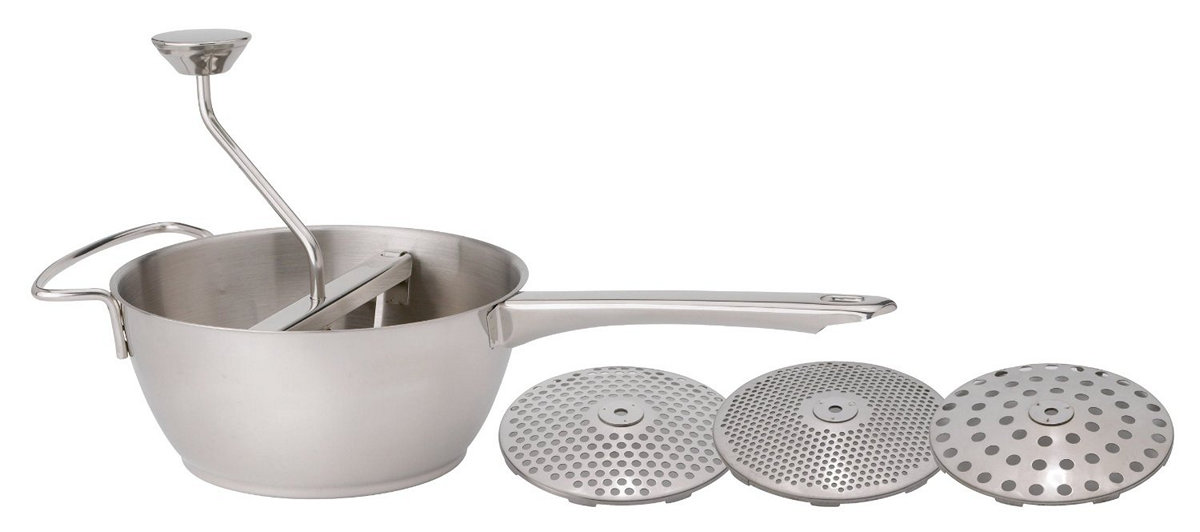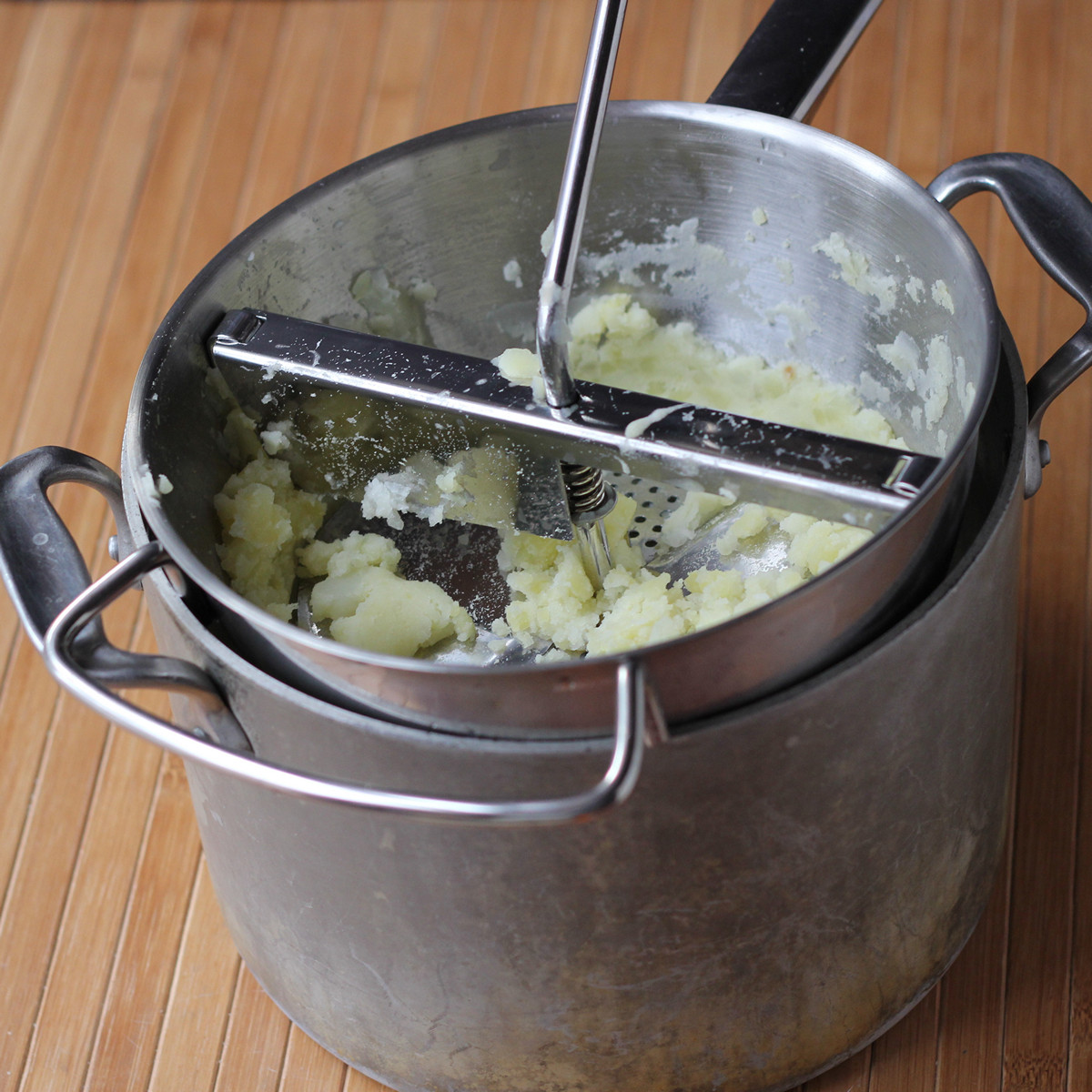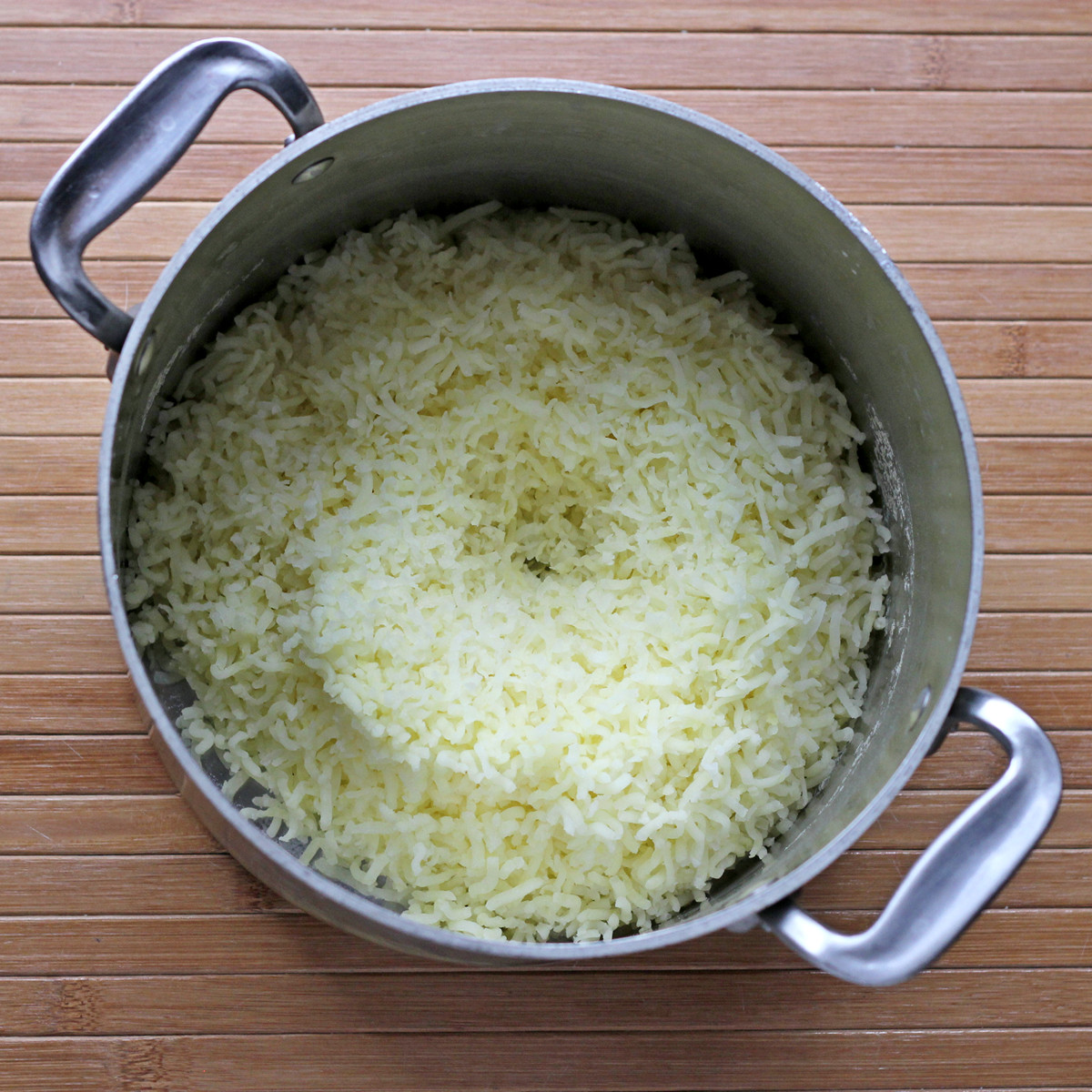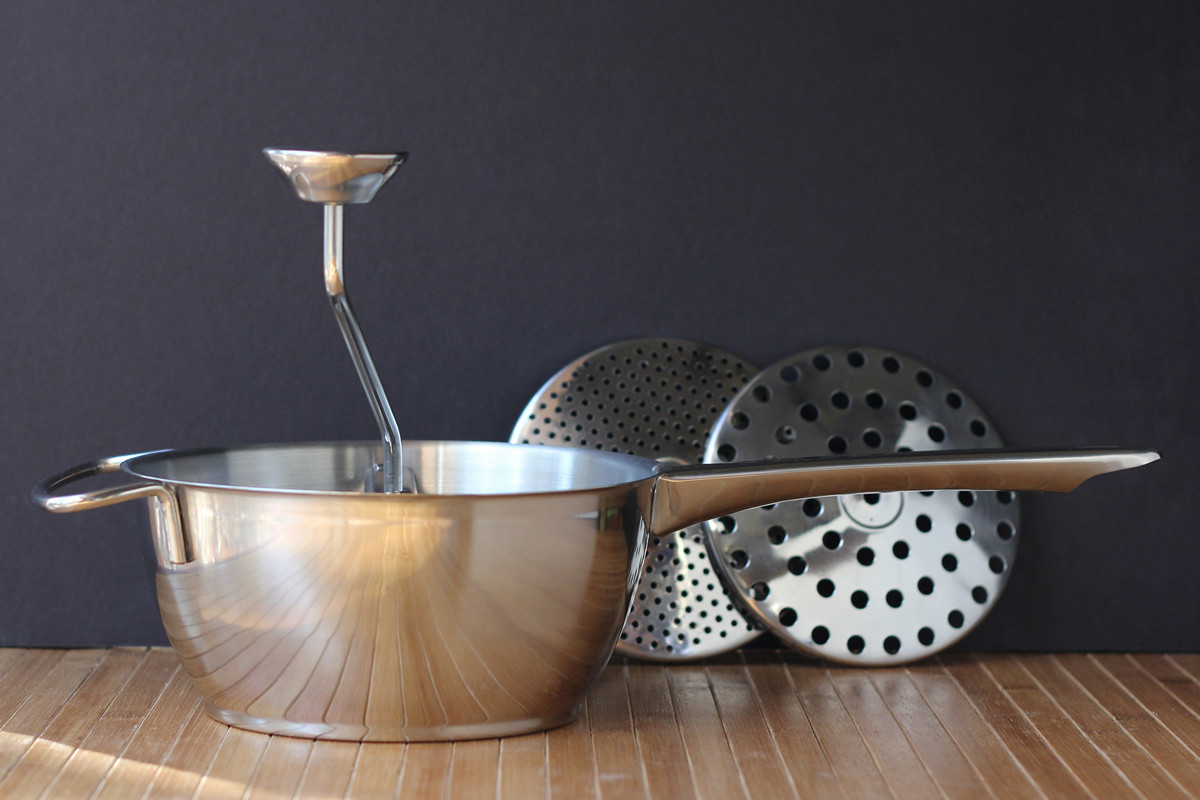Which makes sense. Fresh tomato season is over, so I have no reason to be squishing tomatoes. But potatoes are always around.
When I don't use a manual potato masher (which I sometimes do), and particularly when I'm looking for very smooth potatoes, I use a ricer. A food mill gives the same result as a ricer, but it works differently. Instead of pressing the potatoes straight through the holes, you turn a crank. It's takes less muscle.
The bowl of a food mill is also larger than the bowl of a ricer. Rather than spooning a few chunks of potato at a time into a ricer, I was able to dump a small pot of potatoes into the ricer - water and all. I let it drain, then I started smooshing.
The ricer from Harold Import Company has a 2-quart bowl, but I wouldn't suggest filling it to the rim with potatoes (or anything else for that matter) since you need room for the paddle to turn, which also causes the ingredients in the bowl to move around a bit.
But still, it was big enough to mash all the potatoes I needed. And, if not, you just refill. In that case, I'd suggest draining the potatoes in a colander and then adding them as you go.
The bowl of a food mill is also larger than the bowl of a ricer. Rather than spooning a few chunks of potato at a time into a ricer, I was able to dump a small pot of potatoes into the ricer - water and all. I let it drain, then I started smooshing.
The ricer from Harold Import Company has a 2-quart bowl, but I wouldn't suggest filling it to the rim with potatoes (or anything else for that matter) since you need room for the paddle to turn, which also causes the ingredients in the bowl to move around a bit.
But still, it was big enough to mash all the potatoes I needed. And, if not, you just refill. In that case, I'd suggest draining the potatoes in a colander and then adding them as you go.
And, as expected, it worked really well. The potatoes were fluffy and smooth and lovely.
I'm sure I'll use the mill for tomatoes in the summer, but since this came with three plates with different-sized holes, it can be used for other things besides tomatoes and potatoes. Like for making spaetzle.
The larger holes would also be useful if you want a chunkier mash of something. Like chunky applesauce, I guess. Or ... I'm sure I'll think of other things.
There are two things to remember about using a food mill. While turning in a clockwise direction is what presses food through the holes, every now and then it's a good idea to give it a spin in the other direction to move things around. This is particularly true when you're working with something that has skins, like tomatoes, since the skins can pile up and cover the holes. But it applies to pretty much anything you're smooshing. Once you see how it works, it will make sense.
Second, and probably most important thing to remember is that the disks need to be inserted with the curve upwards. You can assemble this with the curve down, but nothing interesting is going to happen when you turn the crank. However ... for storage, you can put all the disks in upside-down and attach the crank and keep it all contained. Then, it can be hung from the handle or from the helper handle.
The mill from Harold Import is made from stainless steel, so it looks like it should have a good, long life, and there don't seem to be a lot of places where it could break. But then again, you should be smooshing softer foods through it, and not trying to pulverize rocks.
So ... do you use a food mill? What do you use it for?
Who's it for: People who want to hand-process tomatoes, or rice potatoes, more smoosh cooked squash or rutabagas. Or other things.
Who's it for: People who want to hand-process tomatoes, or rice potatoes, more smoosh cooked squash or rutabagas. Or other things.
Pros: Stainless steel. 2-quart capacity.
Cons: Not a problem with this unit in particular, but inherent in all food mills. It doesn't make sense to haul this out to mash one or two potatoes. For that, I might still use a potato ricer or a hand masher.
Wishes: It would be nice to have one more hole size, more like a screen, maybe, for even finer straining of seedy things.
Source: I received this from the manufacturer for the purpose of a review.




No comments:
Post a Comment
We love comments! Sorry, but because of spam, links are disabled in comment fields.